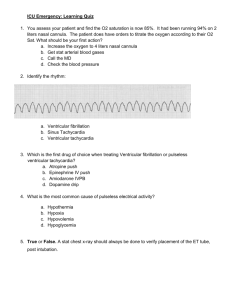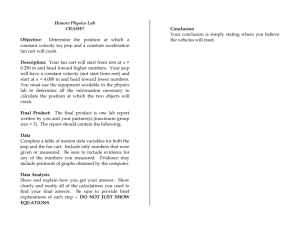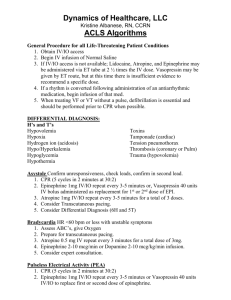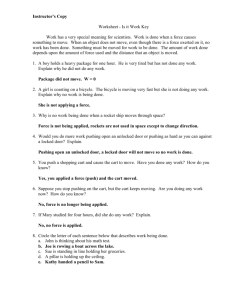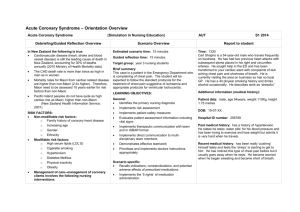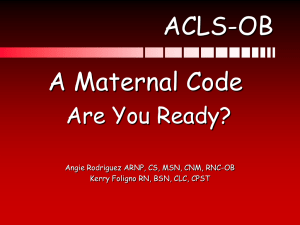post-operative ventricular tachycardia
advertisement
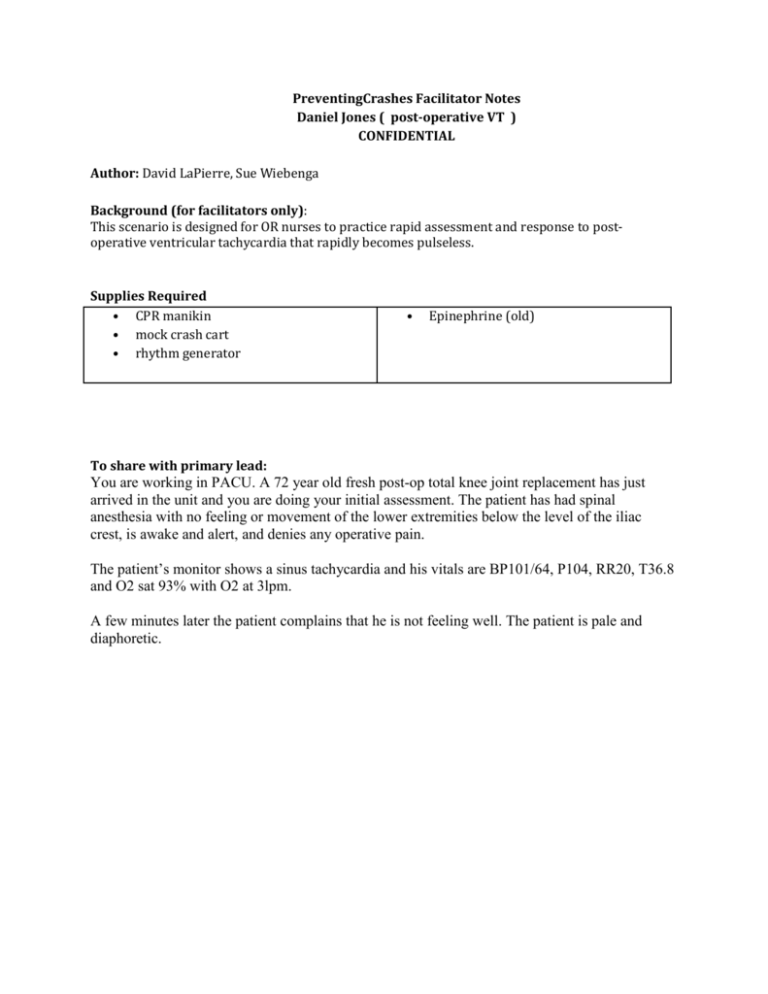
PreventingCrashes Facilitator Notes Daniel Jones ( post-operative VT ) CONFIDENTIAL Author: David LaPierre, Sue Wiebenga Background (for facilitators only): This scenario is designed for OR nurses to practice rapid assessment and response to postoperative ventricular tachycardia that rapidly becomes pulseless. Supplies Required • CPR manikin • mock crash cart • rhythm generator • Epinephrine (old) To share with primary lead: You are working in PACU. A 72 year old fresh post-op total knee joint replacement has just arrived in the unit and you are doing your initial assessment. The patient has had spinal anesthesia with no feeling or movement of the lower extremities below the level of the iliac crest, is awake and alert, and denies any operative pain. The patient’s monitor shows a sinus tachycardia and his vitals are BP101/64, P104, RR20, T36.8 and O2 sat 93% with O2 at 3lpm. A few minutes later the patient complains that he is not feeling well. The patient is pale and diaphoretic. Case Progression – Daniel Jones Stage and Situation Ventricular tachycardia Patient unconscious and pulseless MD Actions ☐recognize rhythm ☐call for help ☐obtain crash cart RN/RPN Actions ☐obtain crash cart ☐call code ☐begin CPR, ensure high quality ☐hand off CPR when help arrives ☐apply pads ☐begin bagging, provide oxygen ☐prepare epinephrine ☐ensure IV access x2 ☐ID code status ☐ensure documentation done ☐apply AED crash cart ☐effective team dynamics MD arrives ☐give SBAR ☐continue high quality resuscitation

